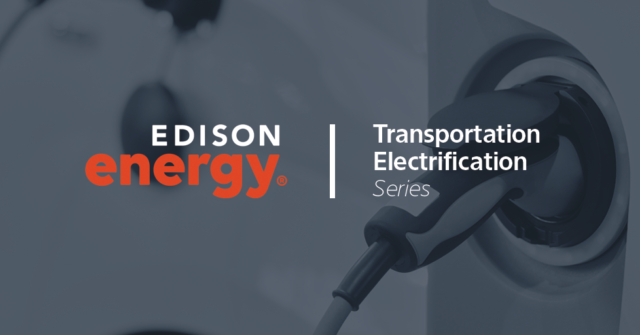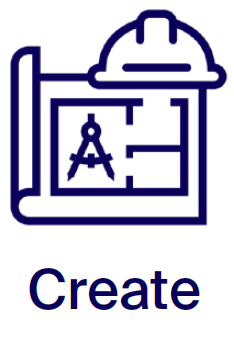
June 15, 2022
Charge Up Your Electric Vehicle Infrastructure Plan with Due Diligence
By Kerylyn Goldwyn, Senior Project Manger, and Simon Horton, EV Infrastructure Lead

A successful EVSE* infrastructure project begins with defining the project scope, identifying permitting and incentive requirements, and developing a well thought out conceptual design. This can all be accomplished through a process known as due diligence. The due diligence process provides a careful step-by-step guide to help ensure that the charging infrastructure design meets all the operational, financial, and strategic planning needs of a project as well as identifying risks and solutions to budget, timeline, and operations.
| *EVSE (Electric Vehicle Supply Equipment) or “Charging Station” – Also known as an EV charging station or EV charging dock. This device allows electricity to safely charge the EV by enabling two-way communication between the charging station and the vehicle, simplifying the charging process by adjusting the onboard charger to ensure it doesn’t exceed charger power limits. |
EVSE Infrastructure Due Diligence

 When choosing potential sites for installing EV charging infrastructure, a preliminary site review can help identify the potential locations for EVSE installation given the operational needs of the fleet and proximity to utility connections. During the initial review, any related site conditions and parallel projects, such as onsite generation, battery storage or other distributed energy projects should be identified. A preliminary desktop review can identify potential challenges and risks to design and budget and inform project feasibility.
When choosing potential sites for installing EV charging infrastructure, a preliminary site review can help identify the potential locations for EVSE installation given the operational needs of the fleet and proximity to utility connections. During the initial review, any related site conditions and parallel projects, such as onsite generation, battery storage or other distributed energy projects should be identified. A preliminary desktop review can identify potential challenges and risks to design and budget and inform project feasibility.
 Knowing the permitting process and any provisions or requirements from an Authority Having Jurisdiction (AHJ) or utility for EVSE infrastructure will better inform the design, budget, and timeline. Potential incentive opportunities are also investigated to determine budget and program requirement impacts to the EVSE installation project. Requirements can be easily added to the EVSE infrastructure conceptual design avoiding more costly changes to an engineered design further down the road.
Knowing the permitting process and any provisions or requirements from an Authority Having Jurisdiction (AHJ) or utility for EVSE infrastructure will better inform the design, budget, and timeline. Potential incentive opportunities are also investigated to determine budget and program requirement impacts to the EVSE installation project. Requirements can be easily added to the EVSE infrastructure conceptual design avoiding more costly changes to an engineered design further down the road.
 The onsite assessment further informs the EV charging infrastructure design process by gathering necessary site information needed for an optimal design. The operator’s desired location, optimal utility connection location, environmental restrictions or other impediments are analyzed to inform the best installation location. This process further informs the project scope, such as any needed utility connection upgrades, and refines the project estimated budget.
The onsite assessment further informs the EV charging infrastructure design process by gathering necessary site information needed for an optimal design. The operator’s desired location, optimal utility connection location, environmental restrictions or other impediments are analyzed to inform the best installation location. This process further informs the project scope, such as any needed utility connection upgrades, and refines the project estimated budget.
 A conceptual site plan incorporates the information gathered during the onsite assessment coupled with AHJ and utility research to provide clear project scope, budget, and timeline. The results found during the conceptual design feed into the details of the engineered design and identify potential design issues and resolutions. Project development costs only increase the longer you wait to have a completed and solid conceptual foundation. The success of a project often depends on how well thought out the initial conceptual design is. Without thorough due diligence and a properly developed conceptual design, a project may be significantly delayed or require redesign efforts resulting in cost overruns needed to meet project requirements.
A conceptual site plan incorporates the information gathered during the onsite assessment coupled with AHJ and utility research to provide clear project scope, budget, and timeline. The results found during the conceptual design feed into the details of the engineered design and identify potential design issues and resolutions. Project development costs only increase the longer you wait to have a completed and solid conceptual foundation. The success of a project often depends on how well thought out the initial conceptual design is. Without thorough due diligence and a properly developed conceptual design, a project may be significantly delayed or require redesign efforts resulting in cost overruns needed to meet project requirements.
For more information, check out our Transportation Electrification Blog Series.
Join Our Mailing List
Let us meet you where you are in your Transportation Electrification journey.
Get connected with our team.
Learn More
Kerylyn Goldwyn
Senior Project Engineer
I am a Senior Project Engineer on the Transportation Electrification Solutions team supporting EV charging infrastructure feasibility, design, and construction for our clients. My work helps ensure that clients have a charging solution that works for their current EV fleet plans, but will seamlessly grow as their EV fleet transition progresses.
I have 20 years of professional engineering experience, nine years specifically in energy, with a deep knowledge of project implementation, design due diligence, energy management, utility programs and rates, and savings and cost analysis.
Educational Background
B.S. in Aerospace Engineering - University of Washington
M.S. in Mechanical Engineering specializing in Controls and Dynamics - Santa Clara University
M.S. in Mechanical Engineering specializing in Energy and Environment - University of Colorado




